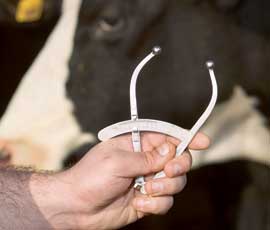Scientists reveal the “hidden burden” of bovine TB

Research suggests that around one in five British herds that have been cleared of movement restrictions after testing for bovine tuberculosis may still be harbouring the infection.
The new research reveals that TB testing misses many animals harbouring the disease and shows that large herds are particularly vulnerable to rapid transmission.
The study, by scientists at Cambridge University, points to a high level of hidden infection in herds – up to 21% – that have been passed as TB-free.
It also strongly suggests that larger herds suffer not just a higher incidence of the disease, but also a faster rate of spread between cattle.
“Many aspects of bovine TB, and its transmission, remain a mystery – and it’s long been known that the protocol and testing methods used to diagnose the disease are far from perfect,” said James Wood, Alborada professor of equine and farm animal science at Cambridge University.
“One of our models suggests that up to 21% of herds may be harbouring infection after being cleared from movement restrictions.”
Since the 1950s, diagnostic testing has been based on reactivity to tuberculin, administered as an injection into the animal’s skin, which responds with a lesion if the animal is positive.
But many scientists consider the current testing method used to diagnose bovine TB, the tuberculin skin test (TST), as unreliable.
For the DEFRA-funded research, scientists used mathematical tools to develop models for estimating efficiency of cattle-based controls for bovine TB.
Two contrasting models were used to demonstrate that the efficiency of control is critically dependent on the time between cattle being infected and becoming infectious to other animals.
The models built by the team represent an advance over previous models as they are informed directly by extensive data on reported incidence and spread of the disease, rather than expert opinion.
The models provide a first estimate of the quantity of infection missed by cattle testing and the contribution of this “hidden burden” of infection to the persistence of bovine TB within herds.
They also estimate a high rate of re-introduction of infection into herds, particularly in high incidence areas.
Andrew Conlan, a researcher in Cambridge’s disease dynamics group, who specialises in mathematical modelling, said that around 38% of herds that are cleared of bovine TB experience a recurrent incident within 24 months, suggesting that infection “may be persisting in herds”.
“The intensity of surveillance in the UK means that animals rarely progress to be sick, with the only evidence of disease being a positive result to testing, but this is known to miss some cases,” added Dr Conlan.
The numbers of cattle herds placed under movement restrictions in Britain due to the suspected presence of bovine TB has increased progressively over the past 25 years, despite an intensive and expensive test-and-slaughter programme.
These models will help policymakers to understand, and thus to control, a disease which costs the UK taxpayer around £91m a year for the testing, slaughter of animals and compensation to farmers.
The research focused on the cattle-to-cattle transmission of bovine TB within herds – rather than infection from environmental factors, such as the reservoir of the disease that is known to exist in the badger population.
The team’s findings were published on Thursday (18 October) in the online journal PLoS Computational Biology.
